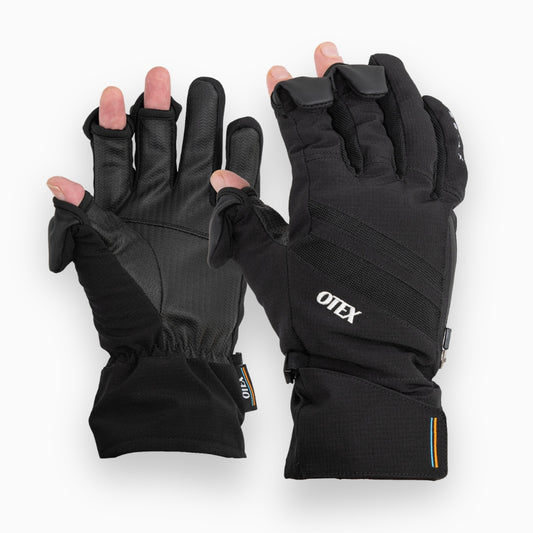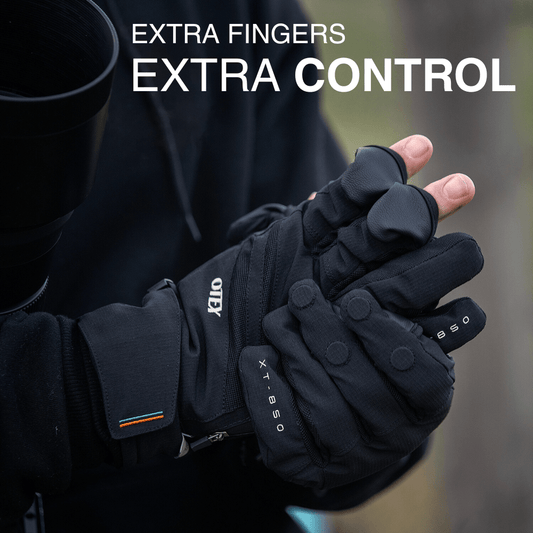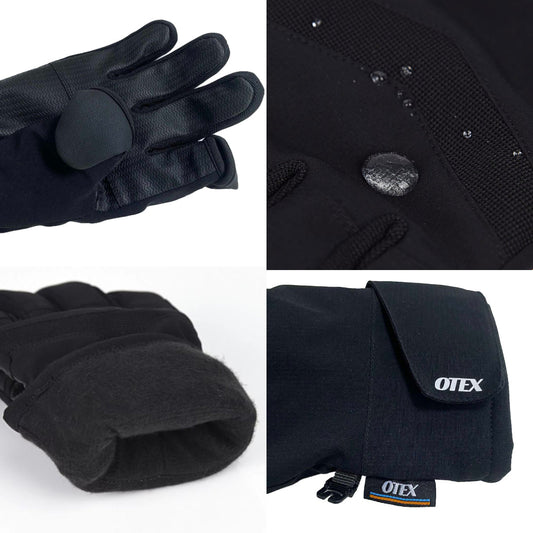Ultimate Travel Guide for Landscape Photographers: Preparing for Northern Hemisphere Adventures
ght toggers, – summer is sneaking up on us here in Australia, and while we’re getting ready to soak up some sun, our friends in the Northern Hemisphere are gearing up for their cooler months. This means one thing for us landscape photographers: it’s prime time to pack the gear, hop on a plane, and head north for some crisp, photogenic wilderness before the Aussie heat cranks up.
You’re probably already imagining it – snow-capped mountains, fiery autumn leaves, or maybe even the northern lights dancing across a starry sky. But before you rush to book that ticket, let’s get you sorted with the right plan. After all, a little preparation goes a long way when you’re chasing that once-in-a-lifetime shot.
Here’s the lowdown on how to get yourself travel-ready for some epic northern landscapes. Grab your camera, chuck in your trusty OTEX gear, and let’s go.

1. Plan Your Dream Shot, Pack for Reality
As much as we’d love to pack the entire studio for every possible scenario, the reality of travel is all about trimming down. Less is definitely more when you’re hiking through fjords or scrambling over rocks for that perfect vantage point.
Start by thinking about what you’ll be shooting. For landscape photography, a solid all-rounder setup could look like this:
- Wide-angle lens for those sweeping, dramatic landscapes
- Telephoto lens to zoom in on distant peaks or wildlife
- Tripod (yes, you’re going to need it for long exposures and steady shots)
- Filters (ND, polarizers – you know the drill)
Remember, the lighter your pack, the more mobile you’ll be. There’s nothing worse than dragging a heavy bag up a mountain only to be too exhausted to snap that golden hour shot. If you can keep it tight, you’ll thank yourself when you’re chasing those elusive light rays across a valley in the Alps or scrambling up some gnarly trails in the Scottish Highlands.
And since we’re talking cold-weather spots, your hands are going to take a beating. Pack a pair of OTEX Accent XT-801 photography gloves so you can keep your fingers functional while adjusting your settings. You need gear that works with you, not against you.

2. Check the Weather, Then Check It Again
Mother Nature has a funny way of surprising us, and she’s especially cheeky when you’re in a foreign land. So, if you’re heading north for some winter landscapes, you’ll need to stay ahead of the weather game.
- Clothing: Staying warm and dry is crucial for long shoots in unpredictable weather. Here are the must-haves:
- Weatherproof your gear: Use protective covers and camera bags that can handle a bit of rain or snow. Rugged bags that are designed to protect your precious gear are paramount for trips abroad - there’s nothing worse than broken or damaged gear due to poor packaging.
- Battery care: Cold weather sucks the life out of your camera batteries quicker than you can say, “Where’s my spare?” Keep a couple of fully charged spares close to your body for warmth, and rotate them as needed.
And don’t just rely on your phone’s weather app. Local knowledge is golden. Chat with the locals when you arrive – they’ll know what to expect and can give you a heads-up if conditions are changing fast.

3. To Drone or Not to Drone
There’s nothing worse than arriving at a stunning location, only to find out your drone isn’t allowed to take flight. Different countries have varying drone regulations, and while Australia might be pretty relaxed, many other destinations have strict rules that could leave you grounded. So, before you pack that drone into your kit, make sure to do your research:
- Drone regulations: Some places have designated no-fly zones, altitude restrictions, or even complete bans on drones, especially near wildlife or heritage sites. Violating these laws can lead to hefty fines, or worse, your drone being confiscated. Check local laws for your destination and ensure you're fully compliant before takeoff.
- Permits: National parks, heritage areas, and even some cities require special permits for drone use or photography. If you’re planning to spend a lot of time shooting in one area, especially protected landscapes, it’s worth applying for the proper permits ahead of time to avoid any last-minute headaches or, worse, having to skip the drone shots altogether.

4. Master the Art of Light Travel Photography
When it comes to landscape photography, the quality and direction of light can make or break your shot. If you’re venturing north during this time of year, you’re in for a visual feast. The north offers a unique combination of extended golden hours and ideal conditions for capturing the night sky, making it a photographer’s paradise.
- Golden hour planning: This fleeting period just after sunrise and before sunset is where you’ll find the most dramatic and beautiful light. The soft, golden tones can transform even the most mundane scenes into stunning vistas. To make the most of it, get to know the exact times for sunrise and sunset at your destination. Tools like PhotoPills or The Photographer’s Ephemeris can help you pinpoint the best times for your location, ensuring you’re ready to shoot when the light is at its most magical.
- Night shooting: If your plans include chasing the northern lights or capturing star-studded skies, preparation is key. Regions like Norway, Iceland, or Canada offer spectacular night-time views, but shooting in these conditions requires some know-how. Make sure your camera settings are prepped before you head out into the cold. Familiarise yourself with your manual settings for long exposures, and check that your lens is clean and free from condensation. Trust me, fumbling with settings in sub-zero temperatures while the aurora dances overhead is not ideal. Plan ahead, so you’re ready to make the most of the spectacular night skies.

5. Airport Security vs. Your Gear: The Showdown
Travelling with camera gear can be a bit of a headache if you’re not prepared. Here’s a comprehensive cheat sheet to help you navigate airport security with minimal fuss and ensure that your equipment arrives safely:
- Keep Your Camera in Your Carry-On: Always store your camera and lenses in your carry-on bag. The thought of a $5,000 lens jostling around in checked luggage is enough to make any photographer’s heart race. A well-padded, dedicated camera bag will keep your gear secure and within reach.
- Pack Your Batteries Right: Lithium batteries are notorious for causing security headaches. These cannot be placed in checked luggage due to fire risks. Keep them in your carry-on and use protective covers or cases to prevent short circuits. Also, it’s helpful to carry spare batteries in their original packaging to show security staff if needed.
- SD Cards and Hard Drives: Always carry SD cards and external hard drives with you in your carry-on. These small but vital components hold your precious images and data. In case of luggage delays or loss, having them on you ensures that your work remains safe.
- Inform Security Staff: If you’re travelling with a significant amount of gear, let the security staff know ahead of time. Informing them about your sensitive equipment can prevent unnecessary delays and ensure that they handle your gear with care.
- Prepare for Inspection: Be ready to remove your camera and lenses from your bag for separate screening. Many airports require electronics to be placed in individual bins. Keep your gear organised and easily accessible to speed up the process and minimise handling.
- Keep Documentation Handy: If you’re carrying expensive equipment, consider having documentation or proof of purchase available. This can be useful if you need to explain the value of your gear to security staff or if you’re asked to declare it at customs.
By following these steps, you can make your airport security experience smoother and reduce the likelihood of any complications with your precious equipment.
6. Cold-Weather Essentials for the Photographers on the Go
Shooting in colder climates isn’t for the faint-hearted. Between freezing winds, slippery paths, and foggy lenses, you’ve got your work cut out for you. But don’t stress – with a little prep, you’ll be nailing those shots like a pro.
- Hand warmers: Chuck a couple in your pockets to keep your fingers toasty between shoots. Just because your OTEX gloves have you covered doesn’t mean a bit of extra warmth won’t help.
- Lens cloths: Condensation is a sneaky devil, especially when you’re going from freezing outdoors to warm indoors. Keep your lenses clear and smudge-free with a microfibre cloth.
- Be patient: Cold weather means slower shooting. Give your camera a few minutes to adjust to the new temperatures before you go firing off frames like a maniac.

Let’s Get Snapping
So, whether you're chasing the northern lights, tracking autumn hues, or capturing snowy peaks, the Northern Hemisphere’s cooler months are a playground for landscape photographers. Pack smart, stay warm, and keep your gear dry. With a little bit of prep and some trusty OTEX gear, you’ll be ready to capture the world in all its rugged beauty.
Don't forget to share your epic shots with us by tagging #OTEXAustralia. We can’t wait to see where your lens takes you.
Happy travels, legends!
All images are stock images
Featured Products
OTEX XT-850 Premium Gloves
- $119.95
$119.95- $119.95
- Unit price
- / per
OTEX XT-801 Photography Gloves
- $89.95
$89.95- $89.95
- Unit price
- / per






